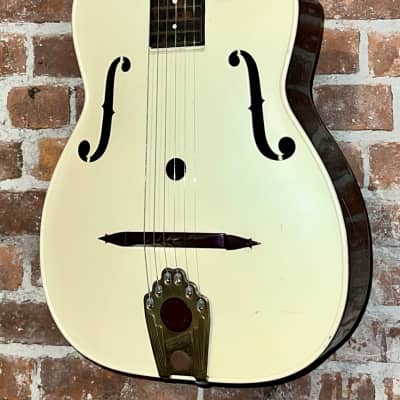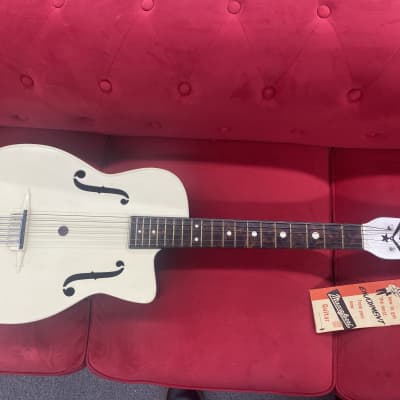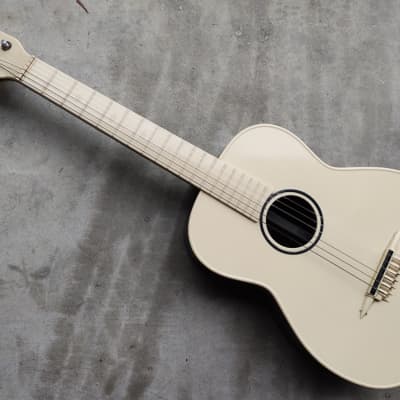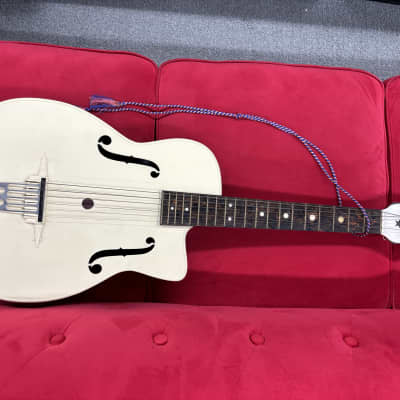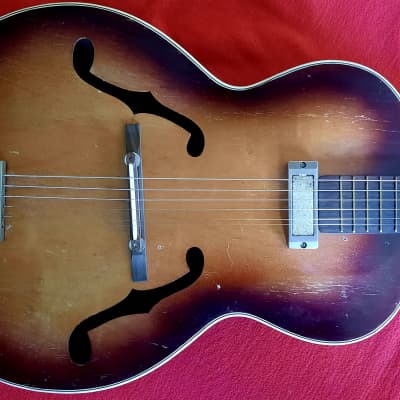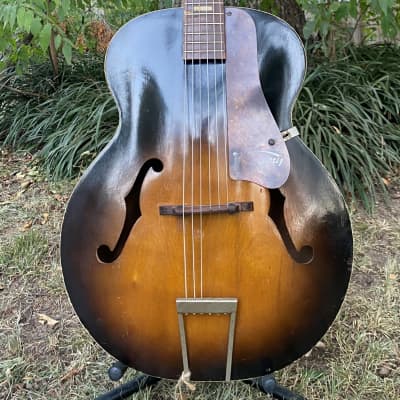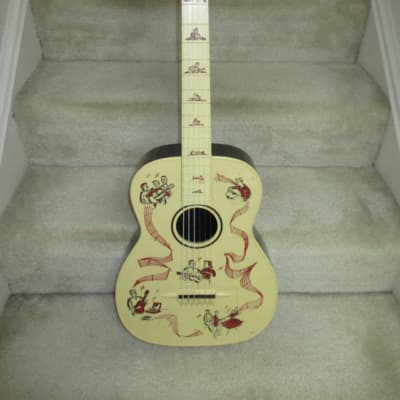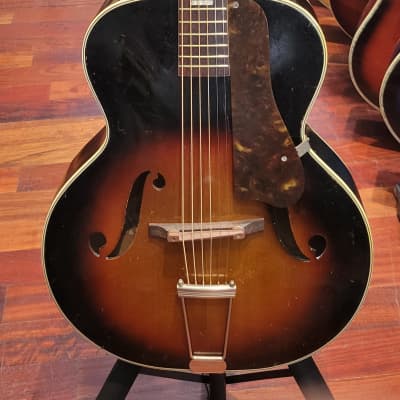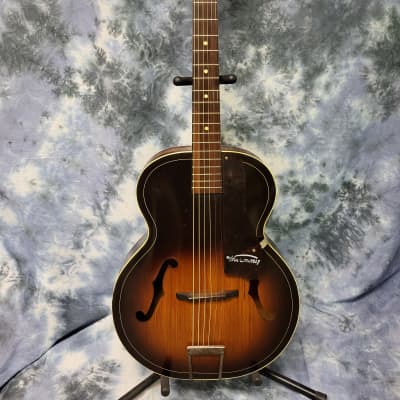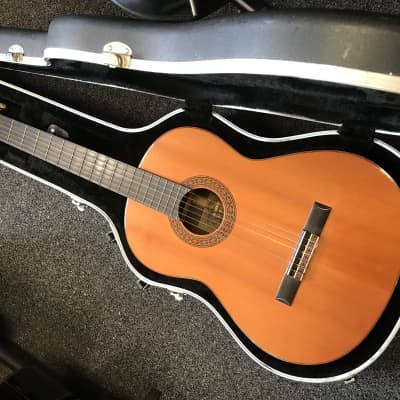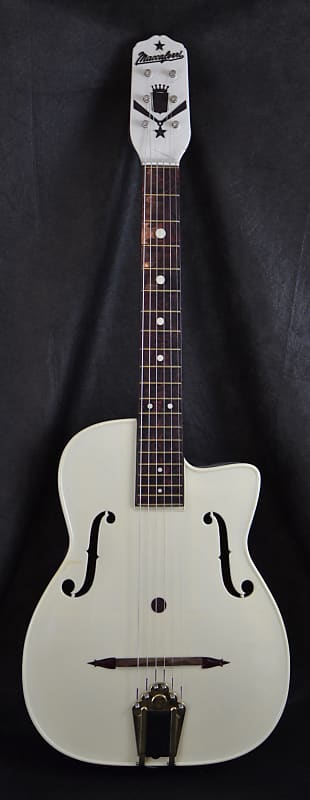

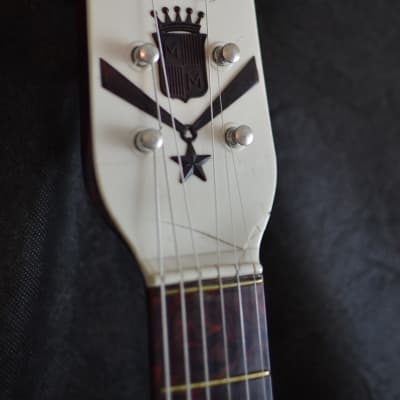
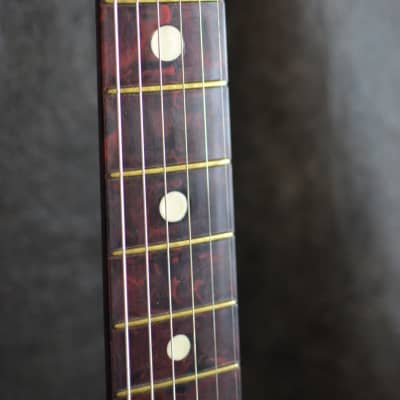
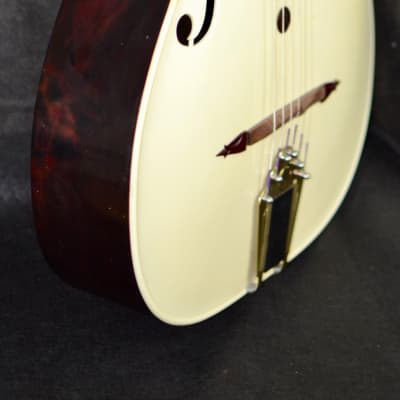
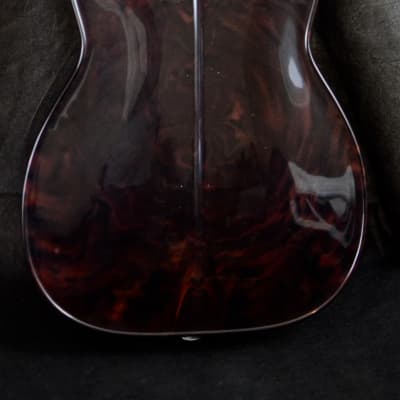
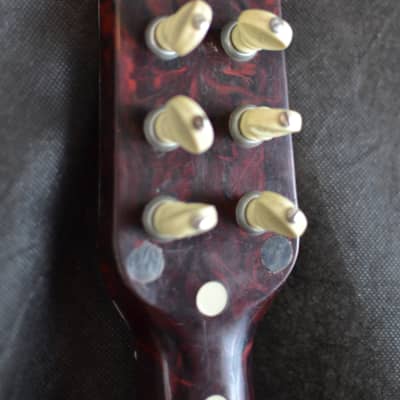
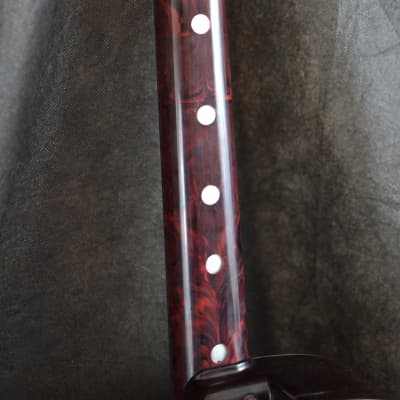
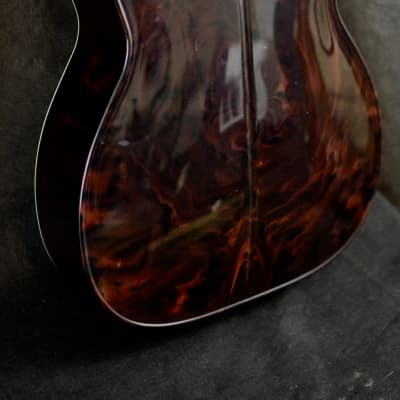
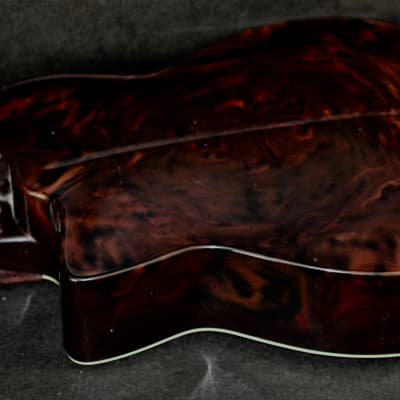
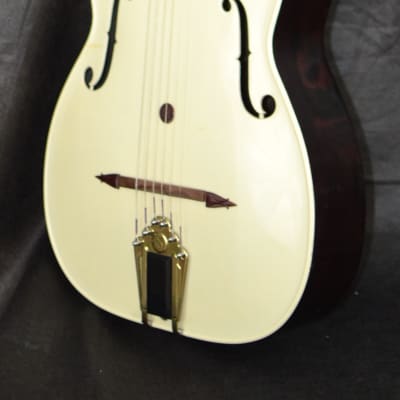
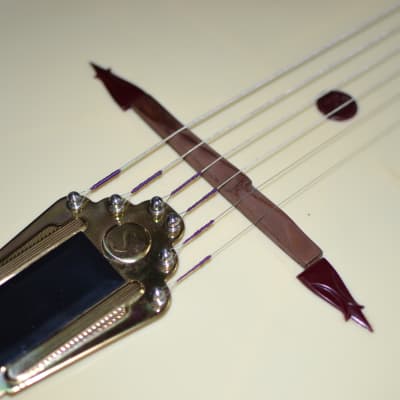
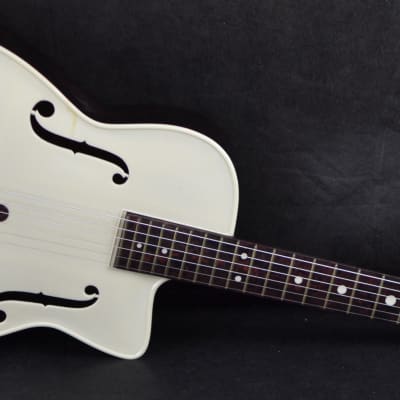
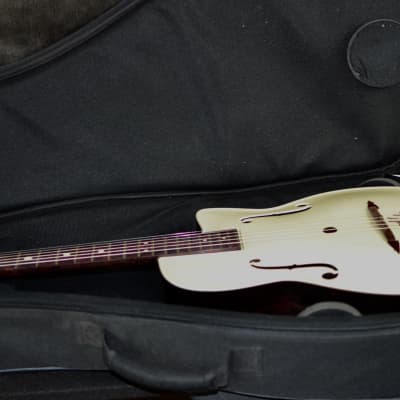

Maccafferi G-40 Plastic Guitar. Such a neat vintage guitar here. This plays and sounds great and has its own voice. I recorded and posted a short demo. It intonates well and plays good all over the neck. The action is not real low on the guitar but feels good for the type of strings and guitar..Mlore like a classical feel. You can adjust the action..read below. The bridge/saddle on this has been replaced i was told by the seller who is a luthier repair person. There is a crack in the overlay of the headstock but it is not onto the structure. Comes with a really nice heavy padded gig bag.
Depending on the instrument you play, the name Mario Maccaferri probably means different things to you. If you play jazz guitar, you know Maccaferri as the man who designed the guitars for Selmer in the 1930s that became the instrument of choice for Django Reinhardt and the Gypsy guitarists who followed in his wake. Harp guitarists know him as the protégé of Luigi Mozzani, the visionary Italian luthier and composer who created a number of wild instruments in the early part of the 20th century. And ukulele players know him as the man who invented the plastic ukulele.
After the success of the plastic ukulele in the early 1950s, Maccaferri began experimenting with making guitars out of Dow Styron. The plastic guitars echoed the body shape of his Selmer designs and even the small details like the Art Deco inspired bridges showed a desire to make something that was more than a toy. The guitars actually sounded much better than you would think but they were too radical for the era and they sold poorly. Maccaferri made a few thousand before stopping production and going back to making the item that made his fortune: the plastic clothespin.
The G40 is a small-sized archtop cutaway made from Dow Styron. The fan bracing of the top differed from most wood archtops of the period, which either had X-bracing or parallel bars. While his Islander Ukuleles were made to appeal to professionals, amateurs, and children alike, Maccaferri’s Styron guitars were intended to be serious musical instruments and a legitimate alternative to the wood guitar, which is sensitive to changes humidity, unlike the plastic instrument. Maccaferri struggled for many years against the perception that his guitars were merely “toys” due to the material from which they were made.Top of the range ' Plastic' guitar made by Maccaferri in the 1950's. Totally unique design and concept from the gypsy style Django Rheinhardt models they were known for. A hell of a lot of research and tooling cash went into this idea and whilst very different in concept, it sadly didn't take off. This is definately not a toy !
The Maccaferri plastic guitar debuted in the Spring of 1953. The introduction was extensively covered by The Music Trades in May of ’53, which reported a press
SPECS
-Adjustable Neck: Practical device to regulate height of strings from frets to suit musician's individual style of playing. To adjust strings flip off plug on tailpiece... use screwdriver. Turn screw clockwise to lower strings closer to frets. DO NOT LOOSEN STRINGS. The guitar will remain in tune.
-Body: Professional, cutaway style with gracefully arched front and back. Made of special highly resonant plastic of ever lasting beauty. Efficient inside soundboard ribbing. Attractive, heavy bead completely around both sides. Classical F-holes. Top of body light spruce color... sides and back a rich contrasting rosewood finish. Entire instrument velvet-smooth.
-Bridge: New 'Pitch Compensator' bridge with decorated ends.
-Gear Head: Six individual, planetary gear units in seated assembly (ratio 14 to 1). Precision engineered . Screw friction regulator on each unit permanently regulated.
-Armoured neck: Neck consists of a formed metal shell, covered with special plastic, and having a string-tension compensated and normalized wood core to guarantee permanent, true alignment. Arched Fingerboard. Twenty-one heavy, metal, professional type frets. Master fret and string divider. Inlaid position marks.
-Cutaway: 'Functional Design' for better performance. The last fret can be reached with complete ease and comfort.
-Tailpiece: Rigid type, embossed from one piece of metal. Special knobs take either ball or loop-end strings. Tailpiece is solidly anchored on sturdy bottom stud.
Reverb Buyer Protection
Reverb has your back if your item is lost, damaged, or doesn't match its description. Simply report any issues within 7 days and we'll help you get a full refund.Learn more about Reverb Buyer Protection.
| Listed | 4 years ago |
| Condition | Very Good (Used) Very Good items may show a few slight marks or scratches but are fully functional and in overall great shape.Learn more |
| Brand | |
| Model |
|
| Categories | |
| Year |
|
| Made In |
|
| Body Shape |
|
